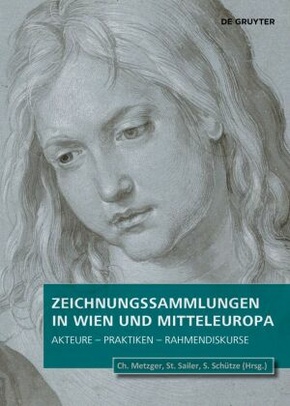Zeichnungssammlungen in Wien und Mitteleuropa - Akteure - Praktiken - Rahmendiskurse
| Verlag | De Gruyter |
| Auflage | 2024 |
| Seiten | 320 |
| Format | 18,0 x 2,5 x 24,5 cm |
| Gewicht | 932 g |
| Reihe | Sammler, Sammlungen, Sammlungskulturen in Wien und Mitteleuropa 5 |
| ISBN-10 | 3111197980 |
| ISBN-13 | 9783111197982 |
| Bestell-Nr | 11119798A |
Die Beiträge in diesem Band beleuchten die Entstehung von bedeutenden Zeichnungssammlungen in Wien und Mitteleuropa, die heute vielfach den Grundstock der großen Kabinette etwa in Wien, Berlin, Dresden und Hamburg bilden. Sie fragen nach den Akteuren, ihren internationalen Verflechtungen und ihren Motivationen, nach besonderen Sammlungsschwerpunkten und Erwerbungsstrategien wie nach Aufbewahrung und Ordnungssystemen. Die mediale Verbreitung der Sammlungen im Reproduktionsstich oder durch Katalogwerke kommt ebenso zur Sprache wie Strukturen des Kunst- und Aktionshandels und das Zusammenspiel von Sammeln, Kennerschaft und Zeichnungswissenschaft. Der Band zeigt dabei auch, wie stark Zeichnungssammlungen vor allem im 18. und 19. Jahrhundert die Kunstgeschichte und die methodische Entwicklung des Fachs geprägt haben.
Mit Beiträgen in deutscher und englischer Sprache
Blick ins Buch
The contributions to this volume shed light on the emergence of important collections of drawings in Vienna and Central Europe, many of which form the basis of today's large museum holdings in Vienna, Berlin, Dresden and Hamburg, for example. They investigate the relevant players and their international connections and motivation, special collection foci and acquisition strategies, as well as systems of storage and classification. The media dissemination of the collections in reproductive engravings or through catalogues is discussed as well as the structures of the art and auction trade and the interplay between collecting, connoisseurship and the study of graphic art. The volume also shows the extent to which collections of drawings influenced art history and the methodological development of the discipline, especially in the 18th and 19th centuries.
With contributions in German and English
Look Inside

